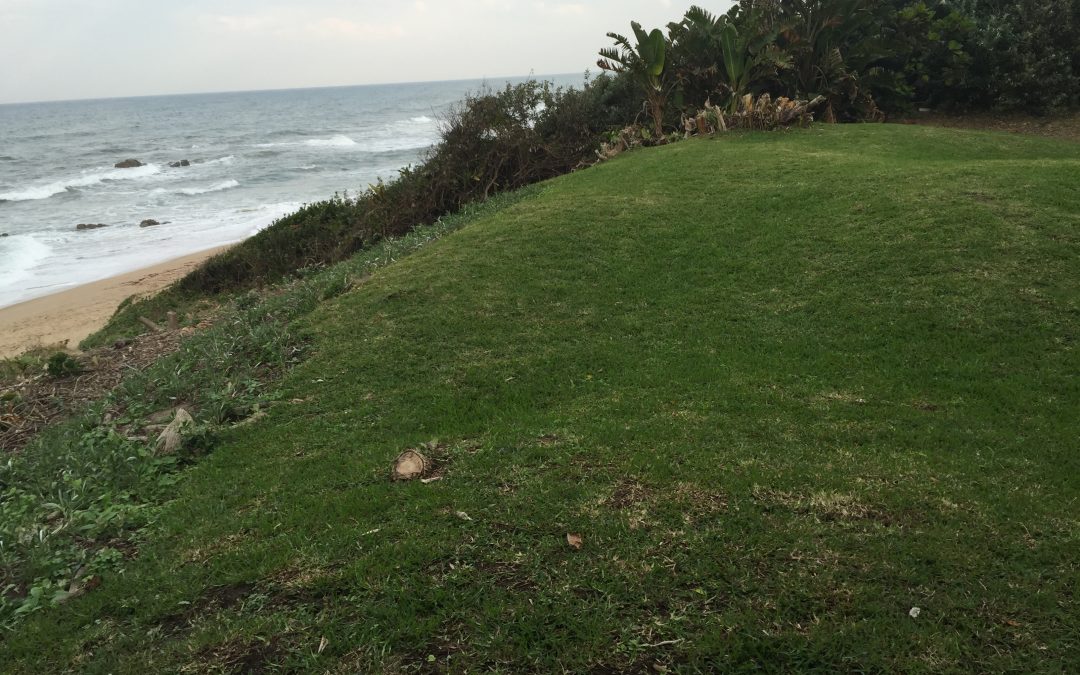KwaZulu-Natal Dune Forest is a subset of the Northern Coastal Forest (FOz 7) (Mucina and Rutherford, 2006: p604). It is found on sandy-loam soil in dunes, located mainly over sedimentary rock of the Karoo Supergroup and other formations. Dune forest grows from 10 m – 150 m above sea level along the KwaZulu-Natal eastern seaboard, the Wild Coast of the Transkei portion of the Eastern Cape, along the coast of Mozambique and Tanzania.
Dune Forest is a long narrow ribbon of vegetation wedged as a continuum between, the Subtropical Seashore Vegetation (AZd 4) (beach plants) on the seaward side and KwaZulu-Natal Coastal Forest (CB 3) on the landward side. Dune forest is rich in species diversity. It is a structured forest comprising of canopy trees, sub-canopy trees or shrubs, a herbaceous layer and intertwining herbaceous creepers linking all the other layers.
The forest is home to the Red Milkwood (Mimusops caffra), Cheesewood (Pittosporum viridiflorum) and White Milkwood (Sideroxylon inerme) trees, where they form the backbone to the forest. These trees are protected species in terms of the National Forest Act. Growing with them are other trees that make up the dune forest. Prominent canopy tree species include Albizia adianthifolia, Psydrax obovata subsp. obovata and Strelitzia nicolai. Under the canopy trees are sub-canopy trees Brachylaena discolor, Chrysanthemoides monilifera, Clerodendrum glabrum, Euclea natalensis, Grewia occidentalis Gymnosporea nemerosa and Kraussia floribunda. Amongst the trees are shrubs comprising of Carissa bispinosa, Isoglossa woodii and Zamioculcas zamiifolia making the forest quite dense. On the ground is a herbaceous forb layer where Asystasia gangetica, Droguetia iners, Microsorium scolopendrium and Oplusmenus hirtellus abound. Other grasses include Digitaria diversinervis and Pseudochinolaena polystachya. Bulbs include Drimiopsis alata, Scadoxus puniceus and Scadoxus multiflorus.
Residential property development and the establishment of holiday accommodation selected the areas nearest the beach to develop. Property development completely destroyed the dune vegetation or has significantly reduced the natural dune forest left along the coast. The obsession of people, who own property bordering the dune forest to have uninterrupted views of the sea, contribute to the demise of the dune forest, when they cut the dune forest to establish a sea view. Dune forest left on private property continues to be altered where people remove forest plants they don’t like and plant lawn grass in the place of the diversity of species. In doing so they reduce the ecosystem services the forest is able to render.
Polyphagous Shothole Borer (PSHB) (Euwallacea whitfordiodendrus) carries a Fusarium fungus (Fusarium euwallaceae) and wherever it goes it is killing trees. The fungus interferes with the trees’ ability to transport water and nutrients and then it begins to die from the tip of the branch. This beetle is active in the dune forest and is affecting the keystone trees of the forest. This beetle and its fungal symbiont is posing a threat to the integrity of the remaining dune forest.
Only 68% of dune forests are formerly protected in nature reserves. Of the unaffected and unaltered dune forest left along the coast, 43% is considered as a national conservation target. The time to negatively impact dune forest is past. Dune forest plays an important role as a migratory corridor for wildlife. It is an important connector in the Maputaland-Pondoland-Albany biodiversity hot spot. The vegetation type is a natural defense to climate change and sea level rise.
Every person, body corporate or institution that has dune forest on their property must begin to drastically curb their normal activities in the dune forest corridor. Areas of dune forest transformed to an unnatural land use must be returned back to dune forest. Dune forest canopy-tree species must be planted where the gaps are to close the gaps in the canopy. Where the canopy is intact the missing sub-canopy trees and shrubs must be planted. Lawn must be replaced with herbaceous groundcover plants. All invasive alien plants must be removed. Security fencing through dune forest is fragmenting the habitat. Under-storey plants must e planted on fringe of the forest along the fence line to protect the forest internal habitat. The time for restoration is now.

